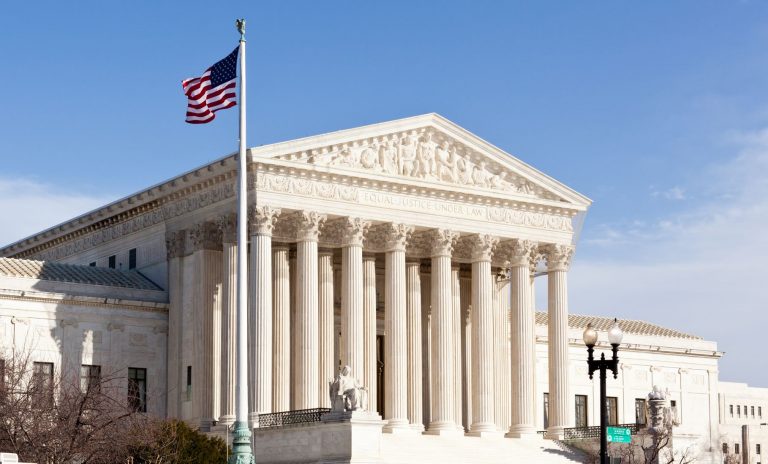Preemption Considerations in Aviation Personal Injury Litigation
Preemption Considerations in Aviation Personal Injury Litigation
In analyzing a pre-suit claim or lawsuit involving an injury on board an aircraft, one of the first questions that counsel should ask is – is this personal injury claim preempted by either federal or international law? The issue of preemption will shape the pleadings in the case as the federal or international law may govern the causes of action available to the plaintiff, the defenses available to the defendant, the length of the statute of limitations as well as other procedural matters, including personal jurisdiction. In analyzing preemption, the parties must first look at the departure city, the arrival city, and whether any segments of the flight involved a stop in an international destination or whether the itinerary, with all of its connections, was strictly domestic.
When a passenger’s itinerary includes one or more international stops, the Convention for Unification of Certain Rules for International Carriage by Air (commonly known as the Montreal Convention) may apply. However, not all countries are signatories to the Montreal Convention. The International Civil Aviation Organization maintains an updated list on its website containing the names of each country that is a signatory to the Montreal Convention, the date each signatory signed and ratified the treaty, and the date the treaty went into force or will come into force. See http://www2.icao.int/en/leb/List%20of%20Parties/Mtl99_EN.pdf (last visited Aug. 13, 2012). Assuming a passenger’s itinerary involves a stop in a signatory nation, the Montreal Convention may apply to the claim provided that the accident (the incident that caused the bodily injury) took place either on board the aircraft or during the process of embarking or disembarking. If all of the foregoing requirements are satisfied, the Montreal Convention applies, providing detailed rules regarding personal jurisdiction, the application of strict liability to an air carrier for any damages below 113,100 Special Drawing Rights, as well as liability defenses involving comparative negligence and third-party liability defenses above the 113,100 Special Drawing Rights.
Armed with the knowledge that the Montreal Convention applies to the cause of action, it behooves the plaintiff to file the complaint under the treaty. Otherwise, defendants should move to dismiss such allegations as the Montreal Convention automatically preempts any state-based claims that fall within its purview. Even if pled under the Montreal Convention, if the plaintiff failed to plead a bodily injury, which is a quintessential requirement of the treaty, a defendant should move to dismiss the action with prejudice on those grounds. Absent a bodily injury, a claim cannot lie under the Montreal Convention. Similarly, when framing affirmative defenses, defendants should plead these within the parameters of the Montreal Convention, rather than state law, to give their opponent fair notice of the defense’s position.
Given the preemptive effect of the Montreal Convention, many courts, including those within the Eleventh Circuit, have determined that subject matter jurisdiction arises under this federal treaty. Once a defendant is on notice that the plaintiff’s itinerary included international travel covered under the treaty, the defendant has thirty days in which to remove the case to federal court pursuant to federal question subject matter jurisdiction. Otherwise, defendants will forfeit the right, and the potential advantages, of litigating in federal court.
On the other hand, when a passenger’s itinerary is strictly domestic, state law does not automatically apply. On the surface it may seem like state law causes of action and defenses will be available to the parties, but there may be other federal laws that preempt the state-law claims. Two notable, preemptive federal laws within the field of aviation are the Federal Aviation Act and the Airline Deregulation Act.
Section 1305(a)(1) of the Federal Aviation Act, commonly known as the Airline Deregulation Act (“ADA”), expressly preempts any states from “enact[ing] or enforc[ing] any law, rule, regulation, standard, or other provision having the force and effect of law relating to rates, routes, or services of any air carrier.” Interpreting this provision, the United States Supreme Court has focused its preemption analysis on whether a state law “relates to” air carrier “services.” Morales v. TWA, 504 U.S. 374 (1992). The Eleventh Circuit, adopting the Fifth Circuit’s definition, defined “services” as follows:
“Services” generally represent a bargained-for or anticipated provision of labor from one party to another . . . . Elements of the air carrier service bargain include items such as ticketing, boarding procedures, provision of food and drink, and baggage handling, in addition to the transportation itself. These matters are all appurtenant and necessarily included with the contract of carriage between passenger or shipper and the airline. It is these features of transportation that we believe Congress intended to deregulate as “services” and broadly protect from state regulation.
Id. at 1257 (quoting Hodges v. Delta Airlines, Inc., 44 F.3d 334, 336 (5th Cir. 1995)(en banc)). The Eleventh Circuit concluded that the ADA’s phrase “‘related to the . . . services of an air carrier’ means having a connection with or reference to the elements of air travel that are bargained for by passengers with the air carriers.” Id. This definition includes the physical transportation of passengers as well as the incidents of that transportation over which air carriers compete. Id. at 1258-59. State-law claims within the preemptive scope of the ADA are subject to dismissal, making this a potential motion to dismiss at the pleadings stage if sufficient facts are pled in the complaint. Otherwise, the ADA should be pled as an affirmative defense and raised on summary judgment, if appropriate.
A second avenue involving preemption of state law claims for domestic travel involves the Federal Aviation Act. Courts analyzing this issue have determined that Congress intended complete field preemption for any claims involving aircraft safety, including the preemption of any state requirements for passenger warnings. This preemption analysis has been recently extended to claims involving commercial air crashes when the allegations pertain to the field of air safety.
Unlike a finding of preemption under the ADA, which results in dismissal of a cause of action, a finding of preemption under the FAA will not leave a plaintiff without a remedy. Rather, those plaintiffs may still recover if they can prove a violation of the federal standard of care under 14 C.F.R. 91.13(a) – “no person may operate an aircraft in a careless or reckless manner so as to endanger the life or property of another.” Any state law claims imposing a different standard of care will be preempted as a matter of law.
With time-sensitive issues, such as a thirty-day removal window, the need to frame the pleadings under the correct law, or the possibility of dismissing an action from its inception, it is critical that litigants consider what law will apply to a passenger’s case. Although it is tempting to assume that state law will govern a personal injury action, that may not always be true as state-law claims are often subject to the preemptive reach of federal laws or international treaties. By giving thought to the issue of preemption from the time a pre-suit demand is received or a complaint is served, a defendant can thoughtfully analyze pre-suit negotiation strategies, removal strategies, early case-dispositive motions, and its defensive posture.









